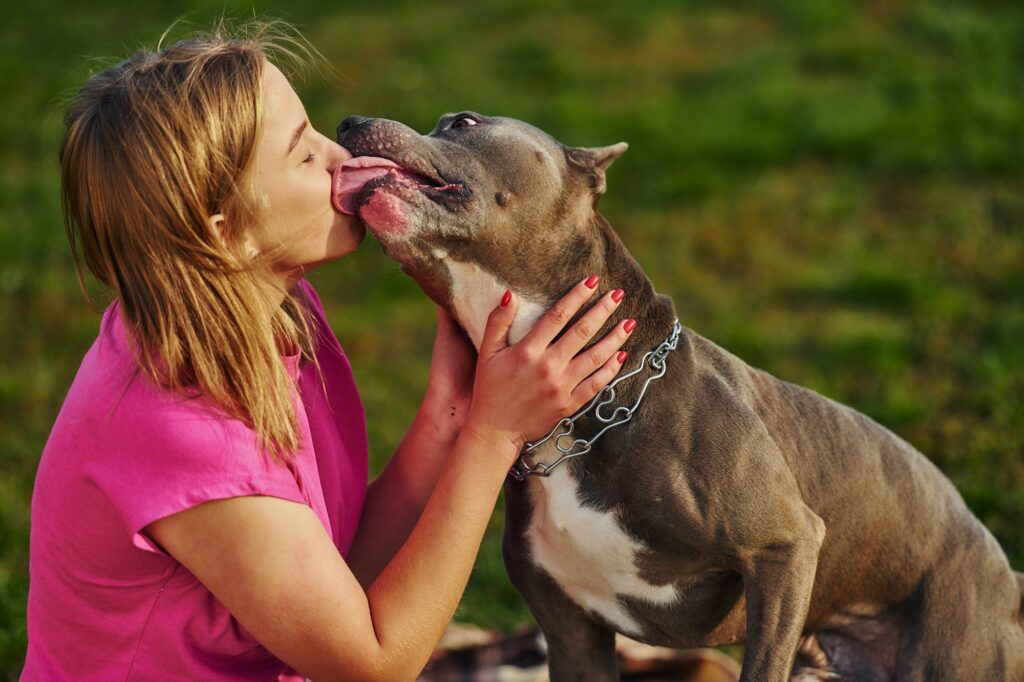Breed bans have been a controversial topic in the realm of animal legislation. The question of whether they are effective in promoting public safety and reducing dog-related incidents has sparked heated debates among policymakers, animal welfare organizations, and dog owners. Imagine if you were told you couldn’t live or visit certain places just because some people didn’t like something about you. Now think about a situation where your looks might make people think you could be dangerous, so society decides to label you and limit where you can go. This is exactly what happens with breed bans and breed-specific legislation.
What Exactly are Breed Bans?
Breed bans refer to laws and regulations that restrict or prohibit the ownership of specific dog breeds or types. These bans typically target breeds that are perceived to be dangerous or aggressive, based on their physical characteristics or historical incidents. The restrictions imposed by breed bans can vary in scope, ranging from outright bans on owning certain breeds to requirements for muzzling or specific insurance policies for owners.
The justification behind breed bans is the belief that certain breeds are inherently dangerous and pose a threat to public safety. Proponents argue that by restricting or eliminating these breeds, the risk of dog-related incidents, such as attacks or bites, can be reduced. However, opponents of breed bans argue that these laws are discriminatory and ineffective in addressing the root causes of dog-related incidents.

It is important to note that breed bans often target specific breeds, such as Pit Bulls or Rottweilers, based on stereotypes and misconceptions. These laws disregard the fact that a dog’s behavior is influenced by various factors, including its upbringing, socialization, and individual temperament. Critics argue that focusing on breed-specific legislation fails to address the underlying issues of responsible ownership, proper training, and education.
The debate surrounding breed bans continues to be highly contentious, with passionate arguments on both sides. While some jurisdictions have implemented breed bans as a means of promoting public safety, others have opted for alternative approaches, such as implementing responsible ownership laws, promoting education and awareness, and enforcing leash and restraint laws for all dog owners.
Are Breed Bans Effective?
Breed-specific laws, or breed bans, have been a topic of intense debate when it comes to their effectiveness. However, there is no evidence to suggest that these laws make communities safer for both people and companion animals. In fact, enforcing breed-specific laws can be costly and difficult. For instance, a study conducted in Prince George’s County, MD, found that their ban on pit bulls did not improve public safety. Additionally, the United States Centers for Disease Control (CDC) decided not to support breed-specific legislation after studying human fatalities resulting from dog bites. The CDC cited problems such as the inaccuracy of dog bite data and the difficulty in identifying dog breeds, especially in the case of mixed-breed dogs. Moreover, there is a concern that as certain breeds are regulated, those who exploit dogs by making them aggressive will simply replace them with other, unregulated breeds.
What is Wrong with Breed Bans
While supports of these breed bans argue that they promote public safety, there are several key issues with these laws. . From encouraging ownership by irresponsible individuals to punishing responsible owners and dogs, breed bans often have unintended consequences, here are just a few of the many things that are wrong with breed bans.
They Can Encourage Ownership by Irresponsible People
Breed bans can inadvertently encourage ownership by irresponsible individuals. When certain breeds are banned or heavily regulated, it creates a perception of exclusivity and uniqueness around these breeds. This can attract individuals who are seeking to own a dog for the wrong reasons, such as for status or to project a tough image. Irresponsible owners who are drawn to banned breeds may not prioritize proper training, socialization, or responsible ownership practices. As a result, these dogs may not receive the care and attention they need, potentially leading to behavioral issues and incidents that reinforce negative stereotypes about the banned breeds.
They Give a False Sense of Security
One of the main issues with breed bans is that they create a false sense of security. By focusing on specific breeds, these laws fail to address the underlying factors that contribute to dog-related incidents, such as irresponsible ownership, lack of proper training, and poor socialization. Banning certain breeds may give the illusion that the problem has been solved when in reality, it only serves to ignore the root causes and may even divert attention away from responsible ownership practices.
Good Owners and Dogs are Punished
Another problem with breed bans is that they penalize responsible owners and well-behaved dogs. Many owners of banned breeds are responsible caregivers who have taken the time to train and socialize their dogs properly. These owners often face discrimination and restrictions solely based on the breed of their dog, regardless of their individual dog’s behavior or temperament. Punishing responsible owners and well-behaved dogs goes against the principles of fairness and equality.

Dogs go Into Hiding
Breed bans can also lead to unintended consequences, such as dogs being forced into hiding or abandoned. When certain breeds are banned, owners may feel compelled to keep their dogs hidden or give them up out of fear of legal repercussions. This can result in dogs being kept in unsafe or inhumane conditions, or being abandoned altogether. Rather than addressing the issue of dog-related incidents, breed bans may contribute to the problem by creating an environment of fear and secrecy.
What is An Alternative to Breed Specific Laws?
Breed bans remain a contentious topic with no conclusive evidence supporting their effectiveness in promoting public safety. These laws often target specific breeds based on stereotypes and misconceptions, disregarding the individual temperament and behavior influenced by various factors. Instead of focusing on breed-specific legislation, alternative approaches can be explored to address the root causes of dog-related incidents.
One alternative is implementing responsible ownership laws, which emphasize the importance of proper training, socialization, and education for all dog owners. By promoting responsible ownership practices, communities can create a safer environment for both people and companion animals. Additionally, enforcing leash and restraint laws for all dog owners can help prevent incidents and promote responsible dog ownership.
Education and awareness campaigns also play a crucial role in preventing dog-related incidents. By educating the public about responsible dog ownership, canine behavior, and bite prevention, individuals can make informed decisions and better understand the factors that contribute to dog-related incidents.
It is important to approach the issue of dog-related incidents with a comprehensive and evidence-based perspective. By promoting responsible ownership practices, education, and breed-neutral legislation, we can create safer communities while respecting the rights of responsible dog owners and their well-behaved pets.
